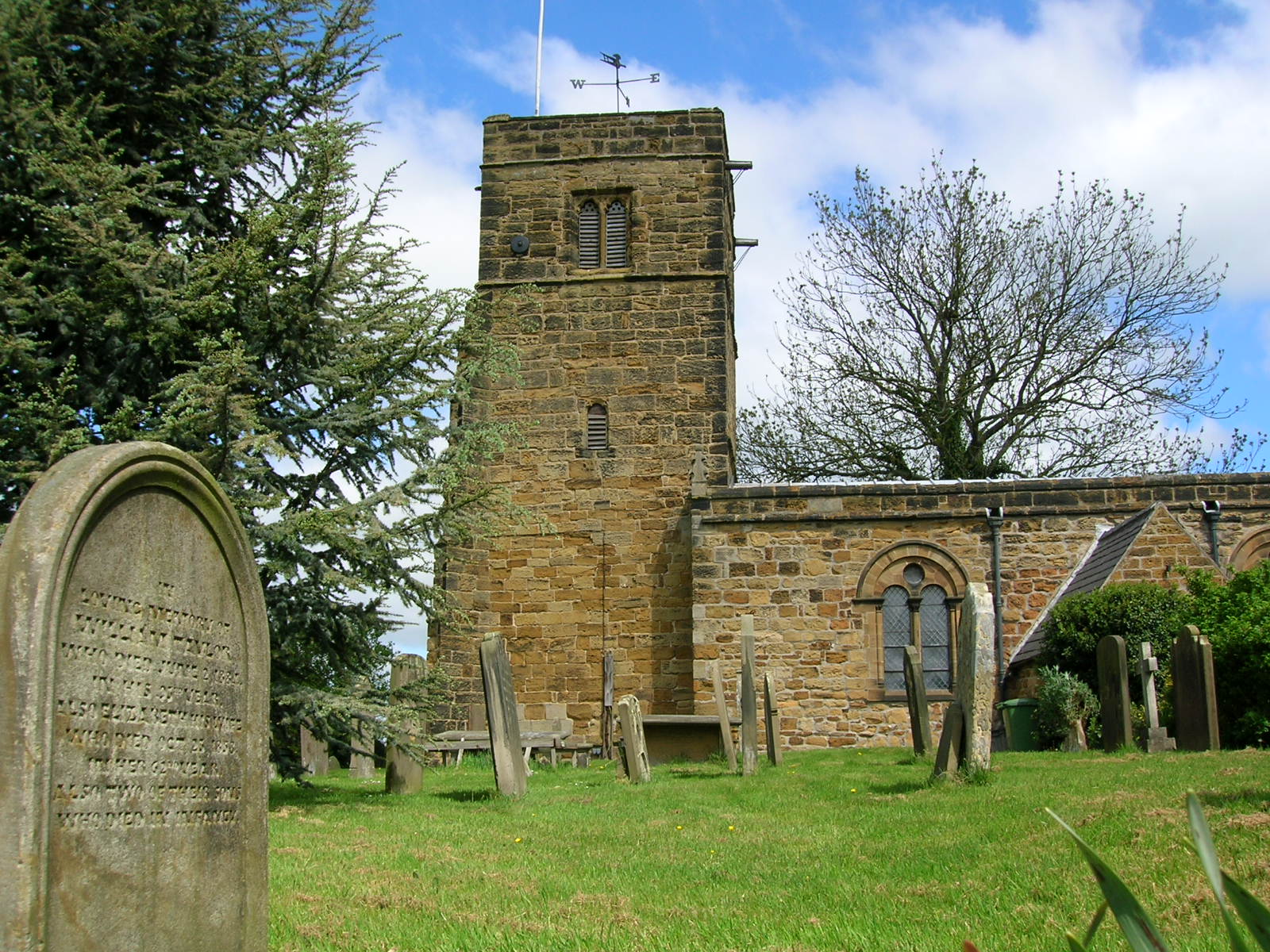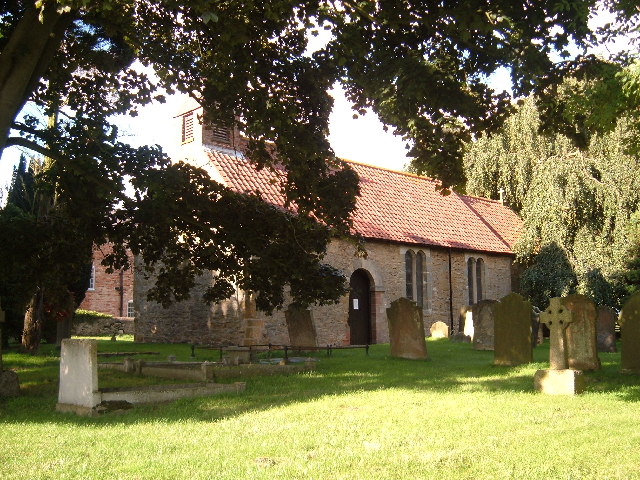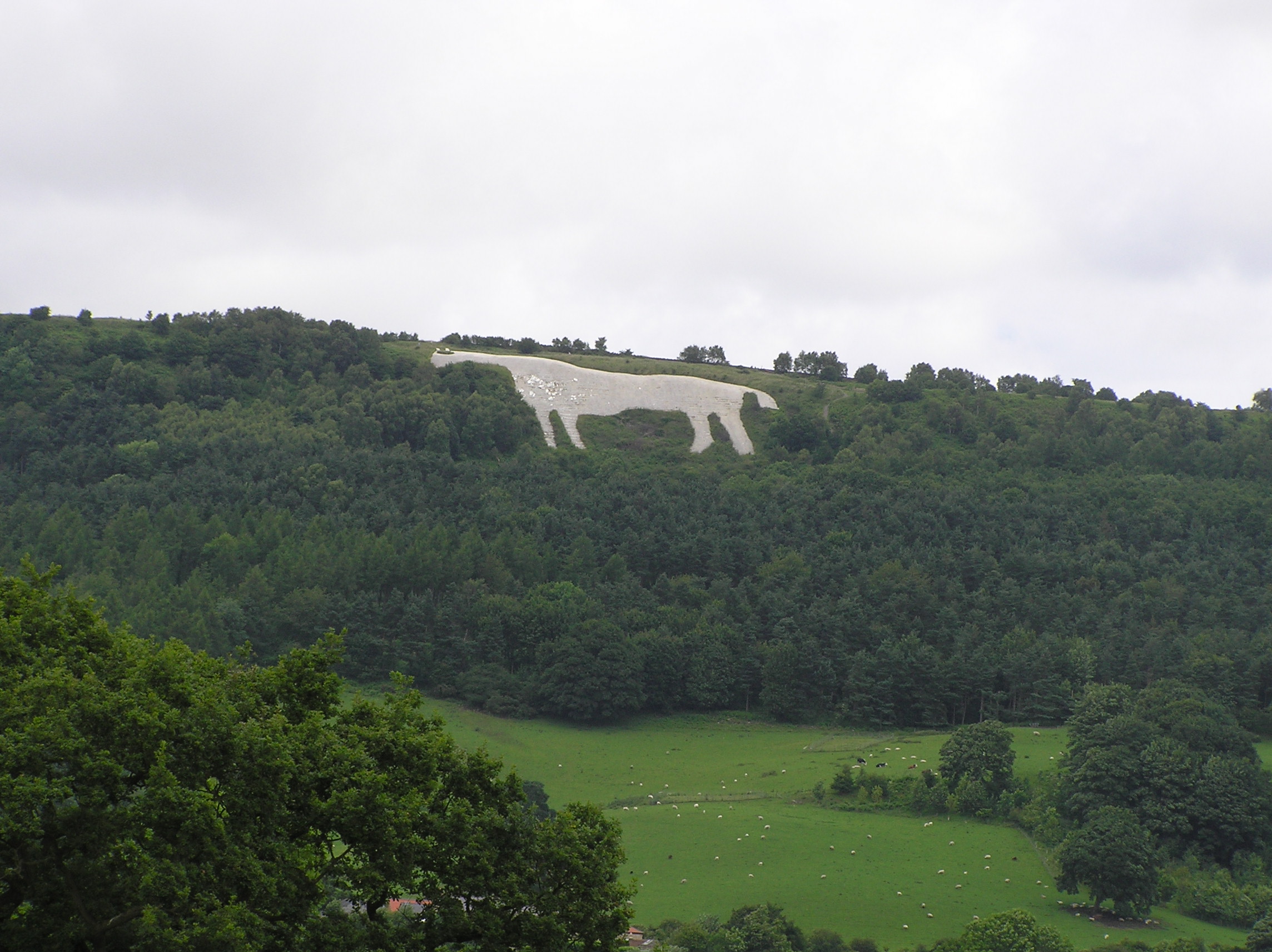|
Carlton Husthwaite
Carlton Husthwaite is a village and civil parish in the Hambleton district of North Yorkshire, England, about seven miles south-east of Thirsk. According to the 2001 census it had a population of 167, increasing to 180 at the 2011 Census. History The village is mentioned in the ''Domesday Book'' as ''Carleton'' in the ''Yarlestre'' hundred. At the time of the Norman invasion, the lord of the manor was ''Ulf of Carleton'', subsequently the lands were granted to the Archbishop of York. The etymology of Carlton is derived from a combination the Old Norse word ''Carl'', meaning free peasants, and the Anglo-Saxon word ''-ton'', meaning ''farm or settlement''. The second part of the name is derived from the Old Norse words of ''Hus'' and ''thwaite'', for ''houses'' and ''meadow'' respectively. Governance The village lies within the Thirsk and Malton UK Parliament constituency. It also lies within the Stillington electoral division of North Yorkshire County Council and the Whit ... [...More Info...] [...Related Items...] OR: [Wikipedia] [Google] [Baidu] |
United Kingdom Census 2011
A Census in the United Kingdom, census of the population of the United Kingdom is taken every ten years. The 2011 census was held in all countries of the UK on 27 March 2011. It was the first UK census which could be completed online via the Internet. The Office for National Statistics (ONS) is responsible for the census in England and Wales, the General Register Office for Scotland (GROS) is responsible for the census in Scotland, and the Northern Ireland Statistics and Research Agency (NISRA) is responsible for the census in Northern Ireland. The Office for National Statistics is the executive office of the UK Statistics Authority, a non-ministerial department formed in 2008 and which reports directly to Parliament. ONS is the UK Government's single largest statistical producer of independent statistics on the UK's economy and society, used to assist the planning and allocation of resources, policy-making and decision-making. ONS designs, manages and runs the census in England an ... [...More Info...] [...Related Items...] OR: [Wikipedia] [Google] [Baidu] |
Stillington, North Yorkshire
Stillington is a village and civil parish in the Hambleton district of North Yorkshire, England. It lies on the York to Helmsley road about north of York. Stillington Mill was the endpoint of the Foss Navigation Act of 1793. History The village is mentioned in the ''Domesday Book'' as ''Stivelincton'' in the ''Bulford hundred''. The lordship of the manor was in the possession of the ''Archbishop of York St Peter'' at the time of the Norman invasion and remained so afterwards. The church continued to hold the land until 1616, when it was leased to a ''William Ramsden''. The lease was then granted to ''Christopher Croft'' in 1625. During the first year of the Commonwealth, many church lands were put up for sale and Croft purchased the manor outright. Following the Restoration, Christopher Croft, son of the former, sought a grant from the church for the manor when many church lands were being reclaimed. He was Lord Mayor of York at the time and was knighted soon after. The Cr ... [...More Info...] [...Related Items...] OR: [Wikipedia] [Google] [Baidu] |
Chapel Of Ease
A chapel of ease (or chapel-of-ease) is a church architecture, church building other than the parish church, built within the bounds of a parish for the attendance of those who cannot reach the parish church conveniently. Often a chapel of ease is deliberately built as such, being more accessible to some parishioners than the main church. Such a chapel may exist, for example, when a parish covers several dispersed villages, or a central village together with its satellite hamlet (place), hamlet or hamlets. In such a case the parish church will be in the main settlement, with one or more chapels of ease in the subordinate village(s) and/or hamlet(s). An example is the chapel belonging to All_Hallows_Church,_South_River, All Hallows' Parish in Maryland, US; the chapel was built in Davidsonville, Maryland, Davidsonville from 1860 to 1865 because the parish's "Brick Church" in South River was too far away at distant. A more extreme example is the Chapel-of-Ease built in 1818 on St ... [...More Info...] [...Related Items...] OR: [Wikipedia] [Google] [Baidu] |
Carlton Husthwaite Church - Geograph
Carlton may refer to: People * Carlton (name), a list of those with the given name or surname * Carlton (singer), English soul singer Carlton McCarthy * Carlton, a pen name used by Joseph Caldwell (1773–1835), American educator, Presbyterian minister, mathematician and astronomer Places Australia * Carlton, New South Wales, a suburb of Sydney * Carlton, Tasmania, a locality in Tasmania * Carlton, Victoria, a suburb of Melbourne Canada * Carlton, Edmonton, Alberta, a neighbourhood * Carlton, Saskatchewan, a hamlet * Fort Carlton, a Hudson's Bay Company fur trading post built in 1810, near present-day Carlton, Saskatchewan * Carlton Trail, a historic trail near Fort Carlton * Carlton Street, Toronto, Ontario England * Carlton, Bedfordshire, a village * Carlton, Cambridgeshire, a village * Carlton, County Durham, a village and civil parish * Carlton, Leicestershire, a village * Carlton, Nottinghamshire, a suburb to the east of Nottingham ** The Carlton Academy ** ... [...More Info...] [...Related Items...] OR: [Wikipedia] [Google] [Baidu] |
Thirkleby High And Low With Osgodby
Thirkleby High and Low with Osgodby is a civil parish in the Hambleton district of North Yorkshire, England. The constituents of the parish consist of the villages of Great Thirkleby, Little Thirkleby and the scattered hamlet of Osgodby. The similarly named medieval settlement of Thirkleby Manor is in the parish of Kirby Grindalythe, Ryedale district. The population of the civil parish taken at the 2011 Census was 266. History The ''Domesday Book'' mentions the village of Thirkleby as ''Turchilebi'' in the ''Yarlestre hundred'' and belonging to the ''Coxwold'' manor. There were 54 villagers with the land consisting of ploughed fields and woodland. At the time of the Norman invasion, the lands belonged to ''Kofse'' but soon afterwards were granted to ''Hugh, son of Baldric''. Soon after, the manor was in the hands of the ''Mowbray'' family and followed the descent of the manor of Thirsk until the 16th century. A mesne lordship was held in the parish by ''Robert de Buscy'' in ... [...More Info...] [...Related Items...] OR: [Wikipedia] [Google] [Baidu] |
Coxwold
Coxwold is a village and civil parish in the Hambleton District of North Yorkshire, England, in the North York Moors National Park. It is 18 miles north of York and is where the Rev. Laurence Sterne wrote '' A Sentimental Journey''. History The village name is derived from Saxon words ''Cuc'', meaning ''cry'', and ''valt'', meaning ''wood''. The village is mentioned in Domesday Book of 1086 as part of the ''Yarlestre'' hundred by the name of ''Cucvalt''. The lord of the manor at the time of the Norman invasion was ''Kofse'' but the manor passed to ''Hugh, son of Baldric'', and thence to Roger de Mowbray. Before 1158 the manor and lands of Coxwold passed to Thomas de Colville. In return for the lands Thomas had to swear allegiance to Roger de Mowbray. Thomas de Colville's estate included the manors of Yearsley, Coxwold and Oulston as well as other properties and land in York, Thirsk, Everley, Nunwick, Kilburn and Upsland. The Colville shield is proudly displayed at one of the ... [...More Info...] [...Related Items...] OR: [Wikipedia] [Google] [Baidu] |
Husthwaite
__NOTOC__ Husthwaite is a village and civil parish in Hambleton district of North Yorkshire, England. It is situated approximately north from Easingwold. History The name probably derives from the Middle English 'hous', from Old English 'hus' meaning a house and thwaite - "a piece of land or land cleared of woods and converted to tillage". There has been a settlement on the site since before the Norman invasion. The village was served by the Thirsk and Malton Line at a station near the Elphin Bridge. There was a Wesleyan Chapel built in 1841 in the village, now private residence. A new Methodist building was built in 1928 next door to the old chapel. Governance The village lies within the Thirsk and Malton UK Parliament constituency. It also is within the Stillington electoral division of North Yorkshire County Council and the White Horse ward of Hambleton District Council. The local Parish Council has seven members. Geography The nearest settlements are Coxwold to the ... [...More Info...] [...Related Items...] OR: [Wikipedia] [Google] [Baidu] |
Thormanby
Thormanby is a village and civil parish in Hambleton District of North Yorkshire, England. It lies on the A19 approximately halfway between Easingwold and Thirsk and about south east of the county town of Northallerton. History Thormanby is derived from the Old Norse personal name of ''Thormothr'' / ''Þórmóðr'' ('' Tormod'' in modern Norwegian) and the suffix ''bi'' meaning "Thormothr's farm". The name ''Thormothr'' means "Thor's gift" (i.e. "mind" and "courage"). The village is mentioned twice in the ''Domesday Book'' of 1086 as "Tormozbi" in the Yarlestre wapentake. Before the Norman Conquest most of the land in the parish belonged to the manor of Earl Morcar, with a small areas owned by Arkil and Gamel. Following ''Domesday'' the manor passed to the Crown and, along with the smaller areas of land, was granted to Robert Malet. It eventually passed into the Nevill family, lords of the manors of Sheriff Hutton and Raskelf, who held it until the 15th century. It pas ... [...More Info...] [...Related Items...] OR: [Wikipedia] [Google] [Baidu] |
Birdforth
Birdforth is a village and civil parish in the Hambleton district of North Yorkshire, England. According to the 2001 census it had a population of 13. The population remained less than 100 at the 2011 Census. Details are included in the civil parish of Long Marston, North Yorkshire. The village is on the A19 road, about six miles south of Thirsk. History Birdforth was also the name of one of the wapentakes, or subdivisions, of the North Riding of Yorkshire, which covered the area around the village. A school was built in 1875, but closed in 1961. Governance The village lies within the Thirsk and Malton UK Parliament constituency. It is also within the Easingwold electoral division of North Yorkshire County Council and the Helperby ward of Hambleton District Council. Geography The nearest settlements to the village are Hutton Sessay to the north-west; Carlton Husthwaite to the north-east and Thormanby to the south. Birdforth Beck, which flows at the south end of the villa ... [...More Info...] [...Related Items...] OR: [Wikipedia] [Google] [Baidu] |
Old English
Old English (, ), or Anglo-Saxon, is the earliest recorded form of the English language, spoken in England and southern and eastern Scotland in the early Middle Ages. It was brought to Great Britain by Anglo-Saxon settlement of Britain, Anglo-Saxon settlers in the mid-5th century, and the first Old English literature, Old English literary works date from the mid-7th century. After the Norman conquest of 1066, English was replaced, for a time, by Anglo-Norman language, Anglo-Norman (a langues d'oïl, relative of French) as the language of the upper classes. This is regarded as marking the end of the Old English era, since during this period the English language was heavily influenced by Anglo-Norman, developing into a phase known now as Middle English in England and Early Scots in Scotland. Old English developed from a set of Anglo-Frisian languages, Anglo-Frisian or Ingvaeonic dialects originally spoken by Germanic peoples, Germanic tribes traditionally known as the Angles, Sa ... [...More Info...] [...Related Items...] OR: [Wikipedia] [Google] [Baidu] |
Hambleton District
Hambleton is a local government district in North Yorkshire, England. The administrative centre is Northallerton, and the district includes the outlying towns and villages of Bedale, Thirsk, Great Ayton, Stokesley, and Easingwold. The district was formed by the Local Government Act 1972 on 1 April 1974, as a merger of Northallerton Urban District, Bedale Rural District, Easingwold Rural District, Northallerton Rural District, and parts of Thirsk Rural District, Stokesley Rural District and Croft Rural District, all in the North Riding of Yorkshire. Geography Hambleton covers an area of 1,311.17 km² most of which, 1,254.90 km², is green space. The district is named after the Hambleton Hills, part of the North York Moors National Park, on the eastern edge of the district. This area is the subject of a national habitat protection scheme as articulated in the United Kingdom's Biodiversity Action Plan. About 75% of the district lies in the Vales of Mowbray and of ... [...More Info...] [...Related Items...] OR: [Wikipedia] [Google] [Baidu] |
Free Tenant
Free tenants, also known as free peasants, were tenant farmer peasants in medieval England who occupied a unique place in the medieval hierarchy. They were characterized by the low rents which they paid to their manorial lord. They were subject to fewer laws and ties than villeins. The term may also refer to the free peasants of the Kingdom of France, part of an ordering of classes with legal privileges who constituted the third estate, a land-owning non-political peasantry, mostly different from other countries with estates. Definitions One of the major challenges in examining the free peasants of this era is that no one single definition can be attached to them. The disparate nature of manorial holdings and local laws mean the free tenant in Kent, for example, may well bear little resemblance to the Free Tenant in the Danelaw. Attempts were made by some contemporary scholars to set out a legal definition of freedom, one of the most notable being the treatise by Ranulf de ... [...More Info...] [...Related Items...] OR: [Wikipedia] [Google] [Baidu] |








